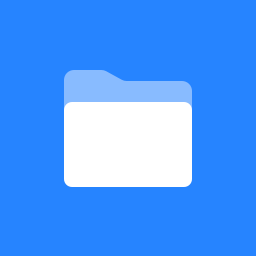Data Warehouse API
The Data Warehouse is an enterprise-level store of data accumulated from a wide range of sources within itslearning. It employs a star-schema layout and optimises key information from itslearning for reporting, data analytics or predictive analytics. The warehouse is updated nightly via an ETL (Extract, Transform, Load) process. It includes: structural information (organisations, terms, assessment scales, etc.), achievement information (student grades, learning objectives, etc.), activity information (logins, student course visits, time in course) and progress information (time spent viewing resources, resources read, etc.). The Data Warehouse has an API customers to pull the information into their own data warehouse and/or their own reporting tools. This API ultilsies OData and can be accessed by many different desktop and cloud-based BI/reporting tools. Please contact your sales representative/account manager or your local itslearning service team for more information about access to the API.
Data Warehouse
Access to, and use of, the Data Warehouse is optional and not activated as default. Following best practice for data security and GDPR itslearning will only give access to customers, who are the owners (data controllers) of the data following a formal process. Please contact your contact your sales representative/account manager or your local itslearning service team for more information about access to the API.
How is the Data Warehouse Structured?
The information within the data warehouse is divided into entities. These entities, the data they contain, and their relationship to how the information is used in itslearning is described in detail elsewhere on this website. Many entities are linked through relationships. The structure of the warehouse has been optimised to allow for quicker reporting across key data from itslearning. The data warehouse contains much of the most important information from itslearning. It does not contain all of the data itslearning has, we have selected the information most common in reports and of most interest to organisations running those reports. For the data model full reference please visit Itslearning Data warehouse API data model page.
How Can I use the Data Warehouse?
The data warehouse is designed for organisations who want to make their own reports or want to perform their own deep-level analysis of their data from itslearning. You will need access to a suitable BI (Business Intelligence) tool to access the data and need an understand/experience of working with large data sets.
Examples of use are:
- Simple Reporting. E.g. Numbers of student logins, time spent in courses.
- Advanced Reporting. E.g. Which of my schools has the students who spend longest in the learning platform? Which content types are these students using most?
- Predictive Analytics. E.g. Looking at how previous students progressed in a course and how they worked within itslearning, can we predict what this years cohort of student will fair? If so we can offer help to those students who may need it.
What is the OData Standard?
The Data warehouse API is based on OData (Open Data Protocol) that defines a set of best practices for exposing data (usually business related) to be easily read and modified by partners. The standardised protocol enables seamless integration with tools like Microsoft® Excel®, Tableau®, SAP® tools, IBM® tools and many more. In most cases you only need a URL identifying the API to be consumed and a set of credentials. This document contains information about how to interact with the itslearning data model exposed via our Data Warehouse API.
Data Security and Data Retention in the Data Warehouse
itslearning takes the security of data very seriously. We only activate the possibility of access to the data warehouse at the request of customers (the data controller). Once itslearning activates access for a specific customer, it is the customer alone who manages the security credentials required to access their data warehouse (the process is detailed elsewhere in this website).
Data retention in the data warehouse is defined by our data processing agreement, best practice and international data standards such as GDPR (https://itslearning.com/global/gdpr/). It is important to remember that certain rights under GDPR such as the right to be forgotten apply to all personal data in both itslearning and the data warehouse.
Service versioning
We follow the best practices for versioning for WCF web services from Microsoft, read more about them here https://learn.microsoft.com/en-us/dotnet/framework/wcf/service-versioning
It is expected that API clients implement lax versioning, meaning that clients of the service are designed to handle changes in data contracts in a backwards-compatible manner.
Specifically, when new data members are added to the service, clients that use lax versioning will not encounter exceptions due to these additions.
This approach ensures backward compatibility, allowing older clients to continue functioning seamlessly with the updated service.
